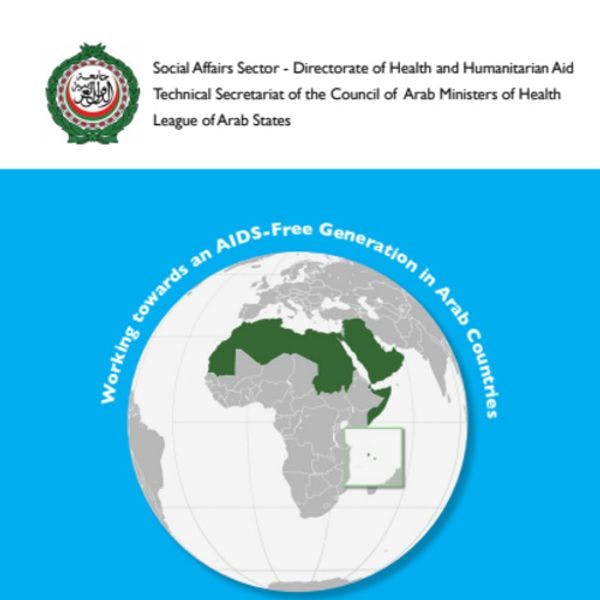Arab Strategic Framework to Respond to HIV and AIDS (2014-2020)
The Arab region is comprised of 22 countries with a population of 367 million out of the 7 billion in the world which accounts for about five per cent of world population. According to the medium variant projection, the Arab Region will have 598 million inhabitants by 2050, an increase of two-thirds by 20101 . In addition, Arab countries have received more than 10% of the world’s migrants and the United Nations Economic and Social Commission for Western Asia (UN-ESCWA) estimates that there are more than 25 million migrants in the region. The Gulf region hosts the largest proportion of guest workers to indigenous populations in the world.
Drug-related HIV transmission is driving the epidemic and people who inject drugs (PWID) are one of the population groups most severely affected by HIV infection in many Arab countries. Throughout the region, there is a convergence of high-risk behaviours among PWIDs, where unsafe injecting practices are accompanied by unsafe sexual behaviours, and overall risk of exposure increases.
Available evidence indicates that the Arab countries are far from being on track in achieving the global target for people who inject drugs. Significantly stronger commitment is urgently needed to bring evidence-informed responses to scale programmes targeting PWID. Arab countries with documented epidemics among PWID and which do not currently address the needs of PWID in their national AIDS strategies, should take immediate steps to rectify this10. Governments must urgently commit major new resources to comprehensive, evidence-informed prevention programmes for PWID and intensify efforts to increase the scale of HIV testing, and harm reduction programmes.
This document aims to support Arab States to achieve the goals and targets of the 2011 United Nations General Assembly High Level Meeting on HIV and AIDS.
Keep up-to-date with drug policy developments by subscribing to the IDPC Monthly Alert.
